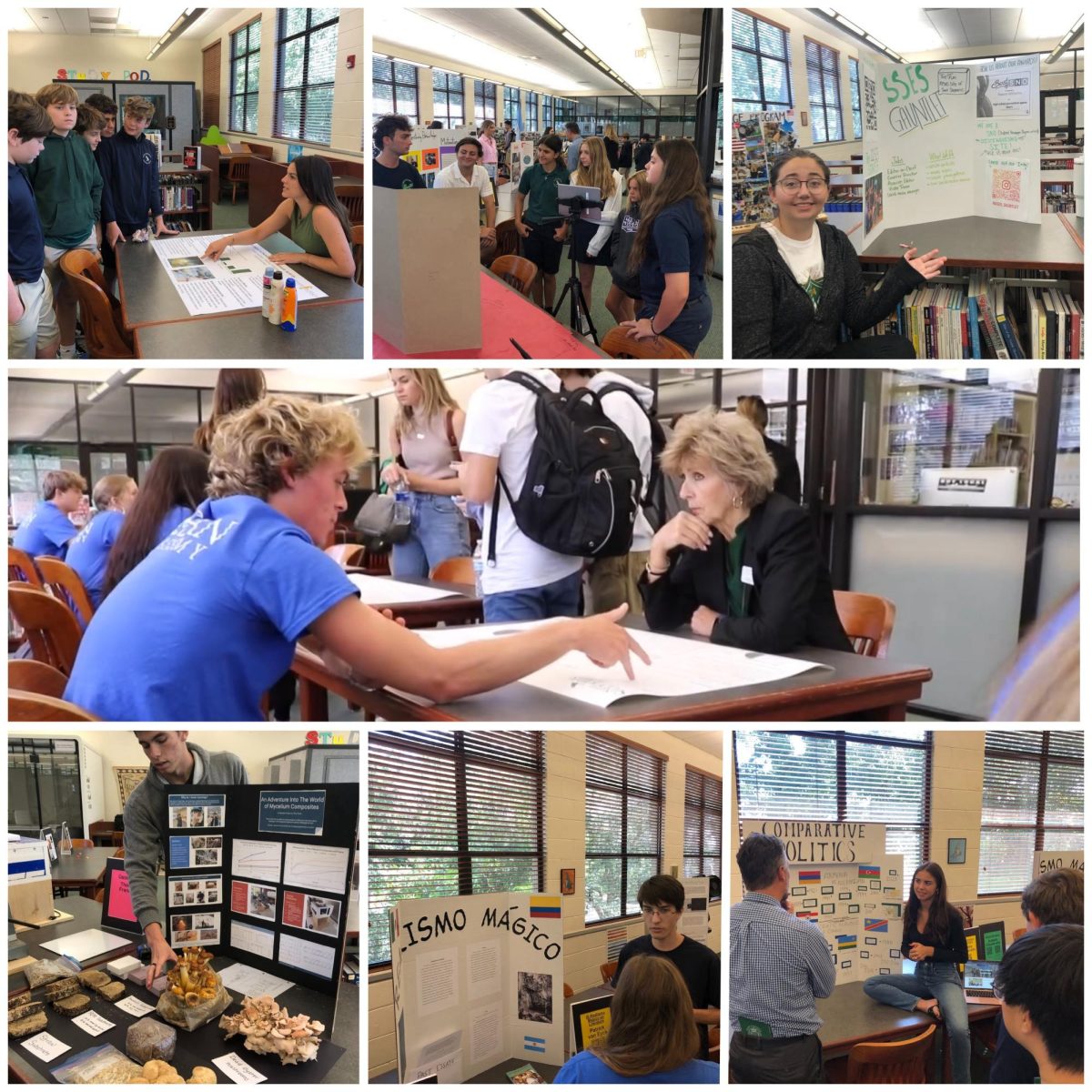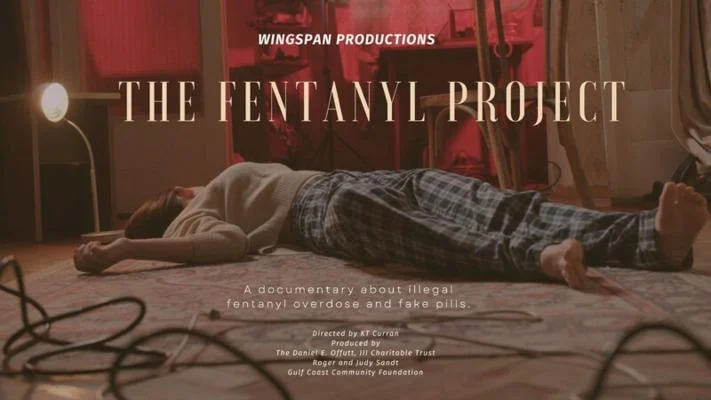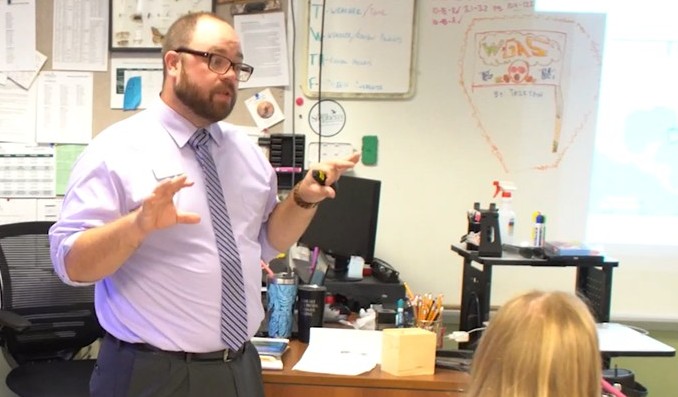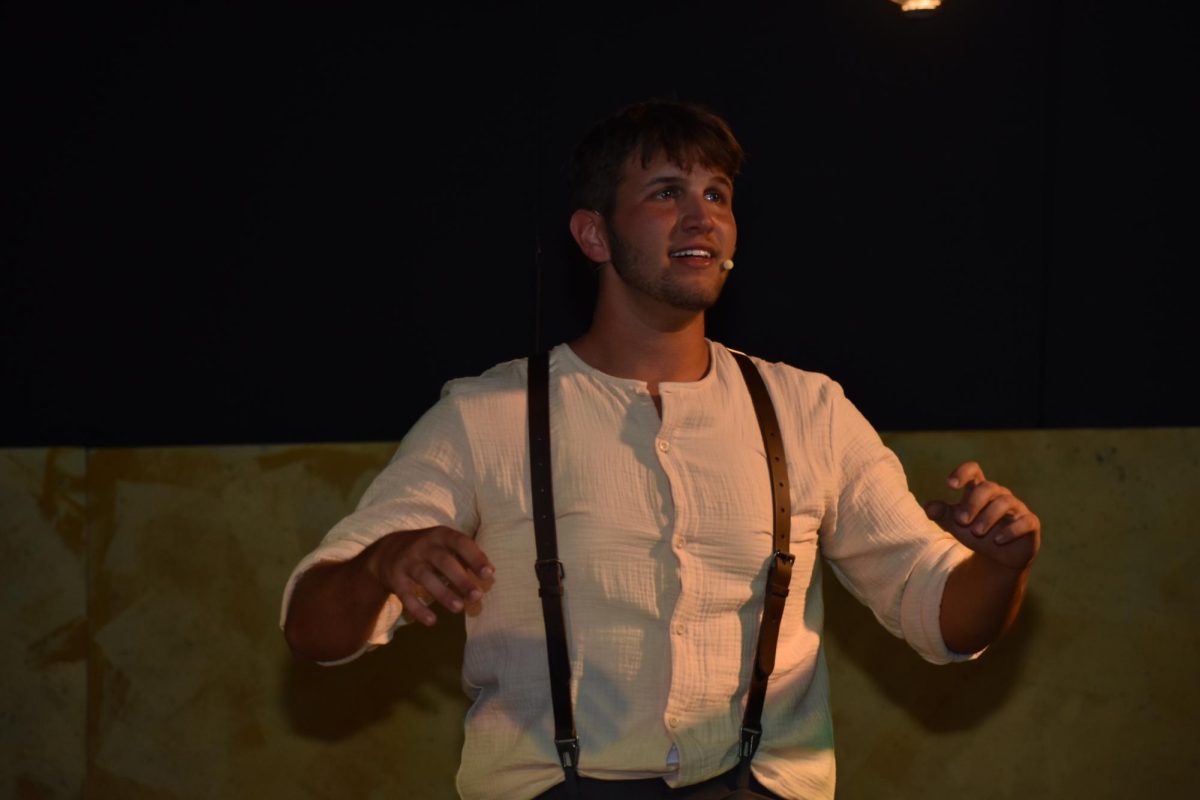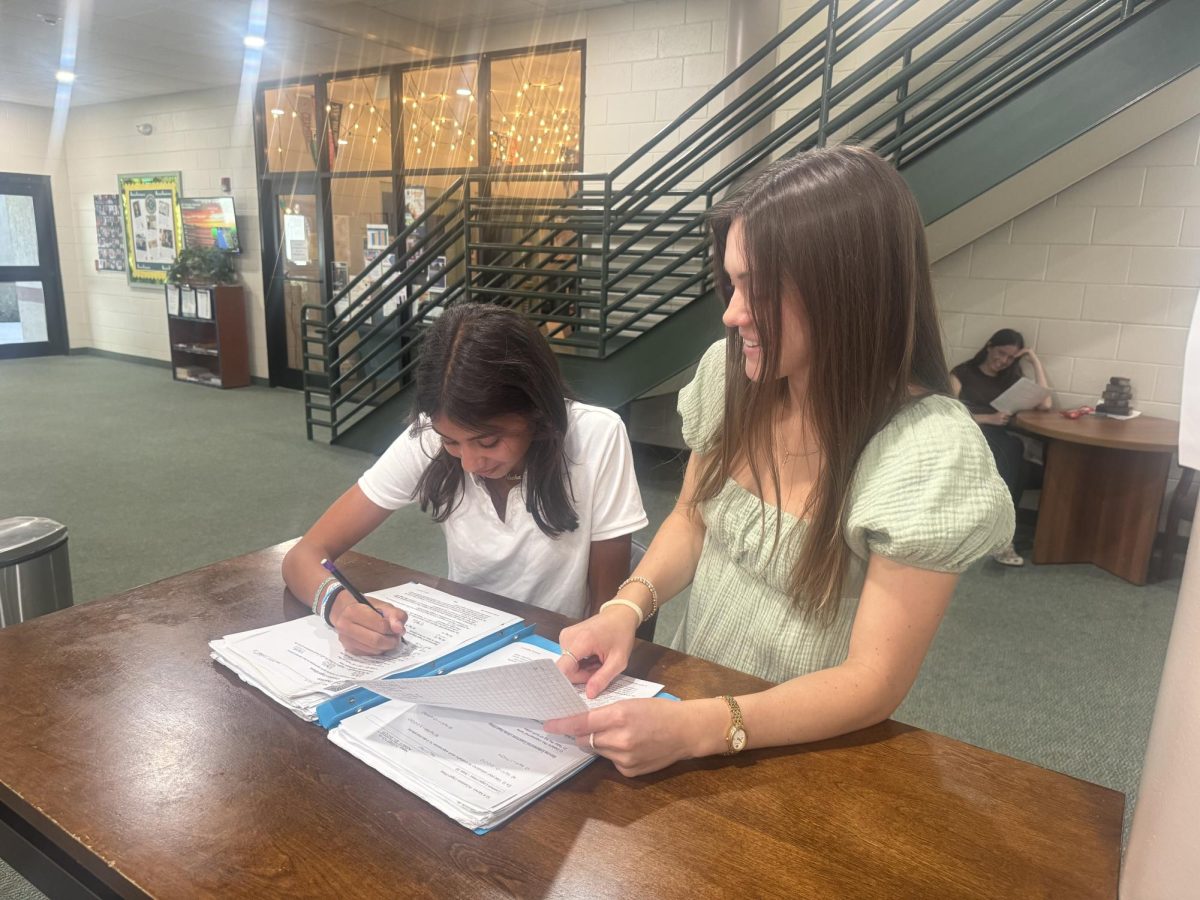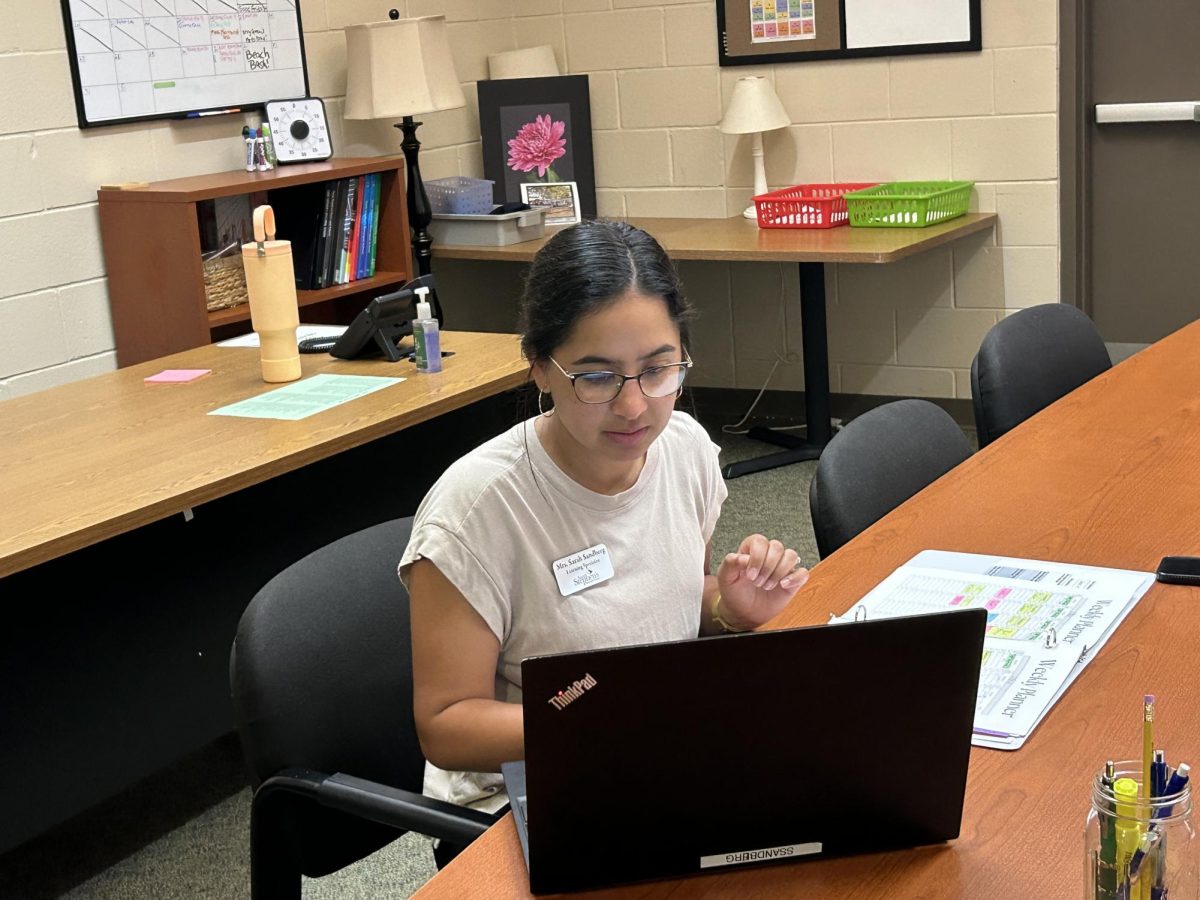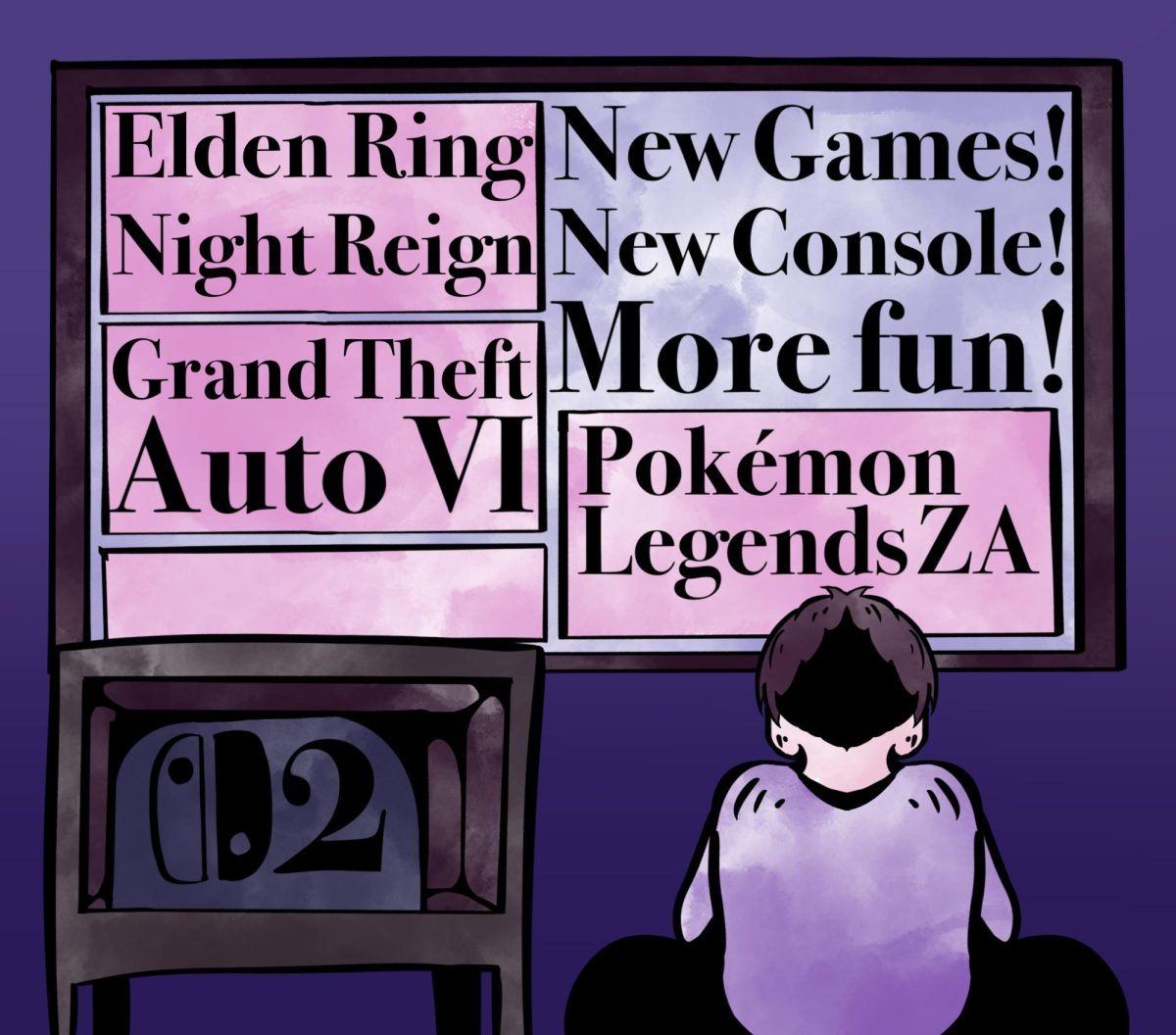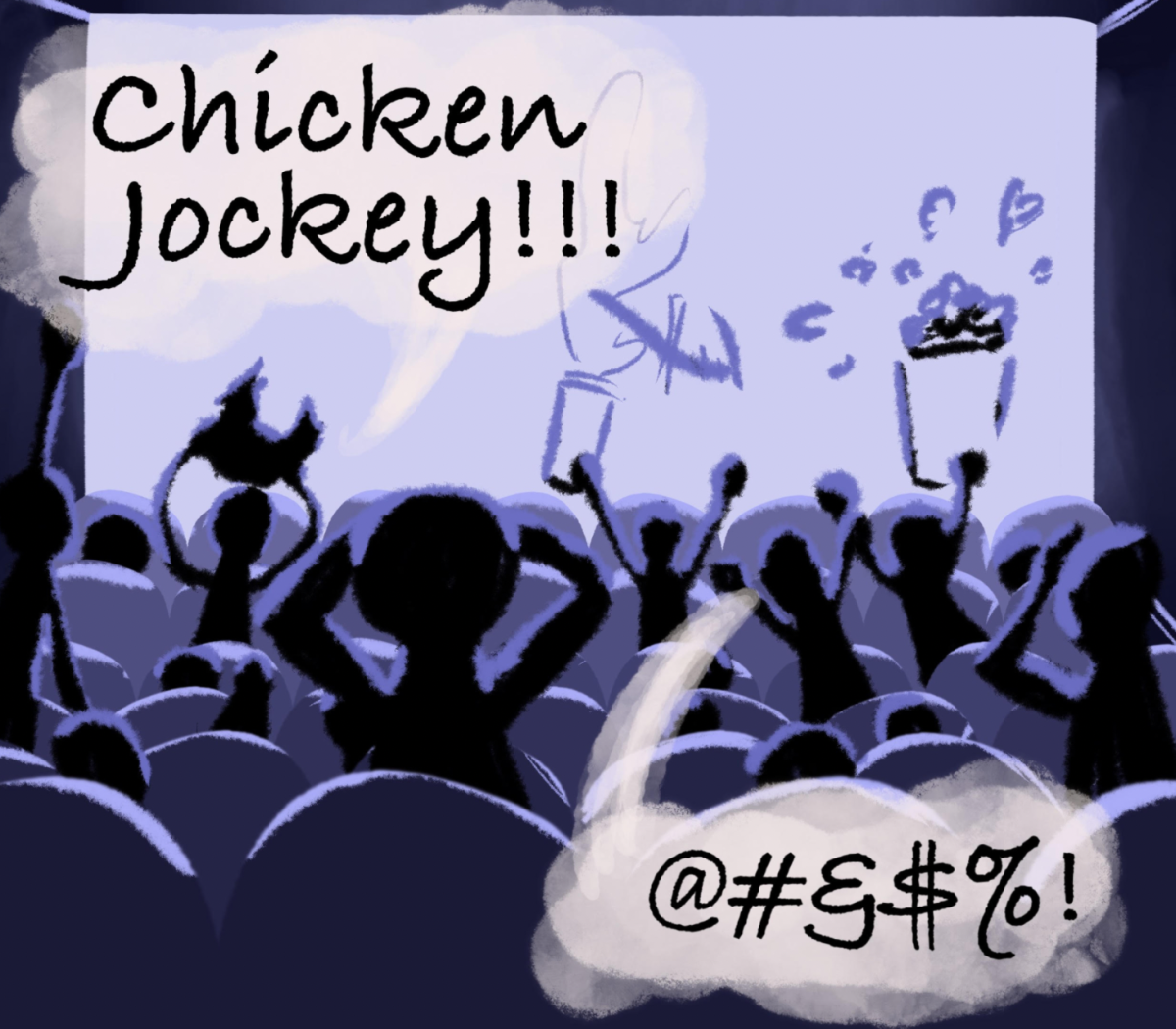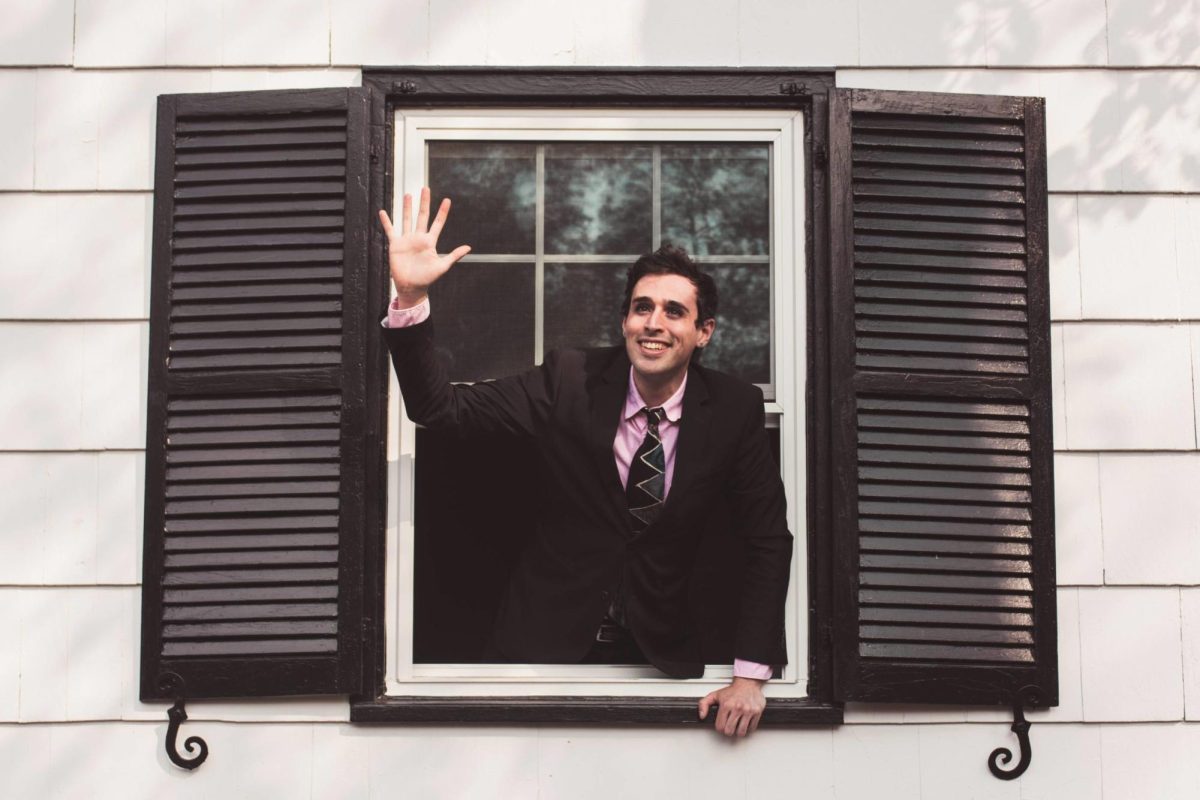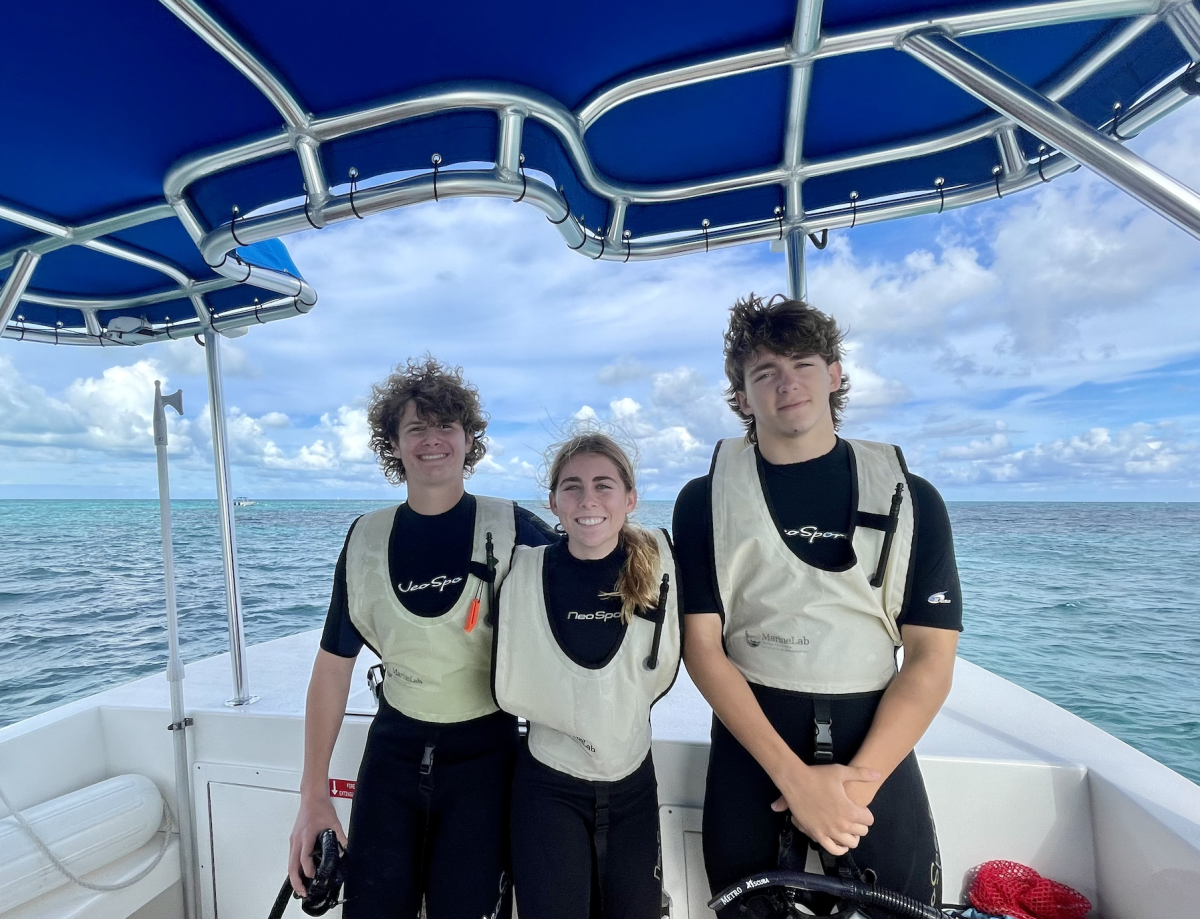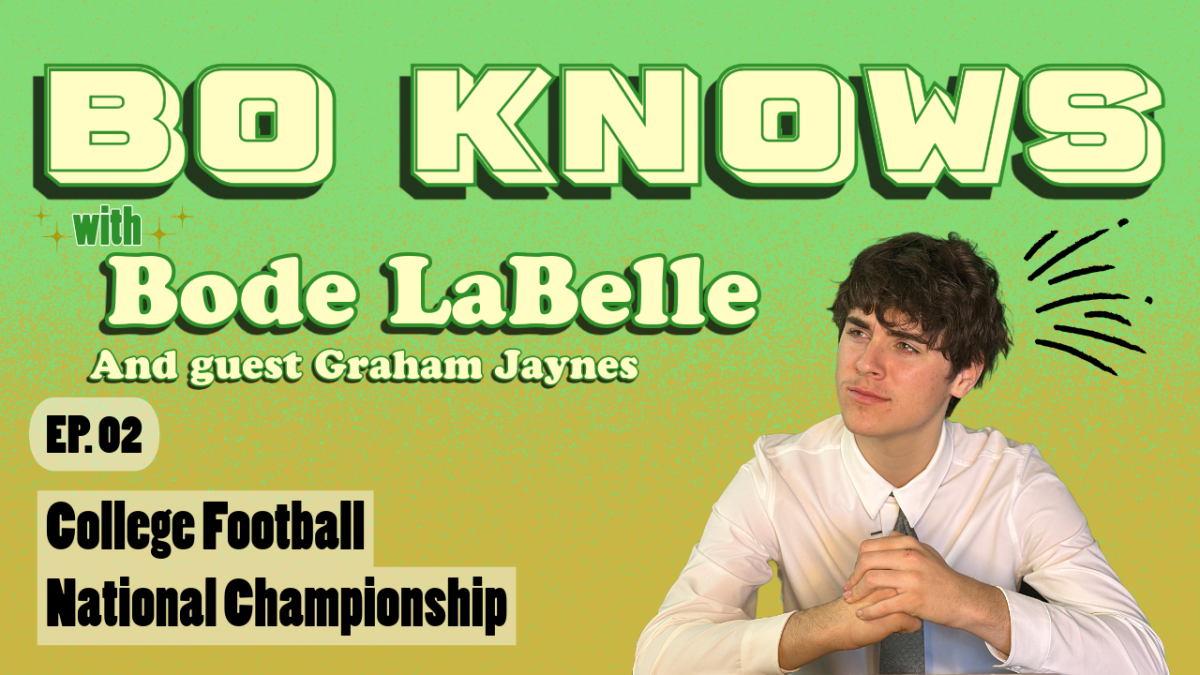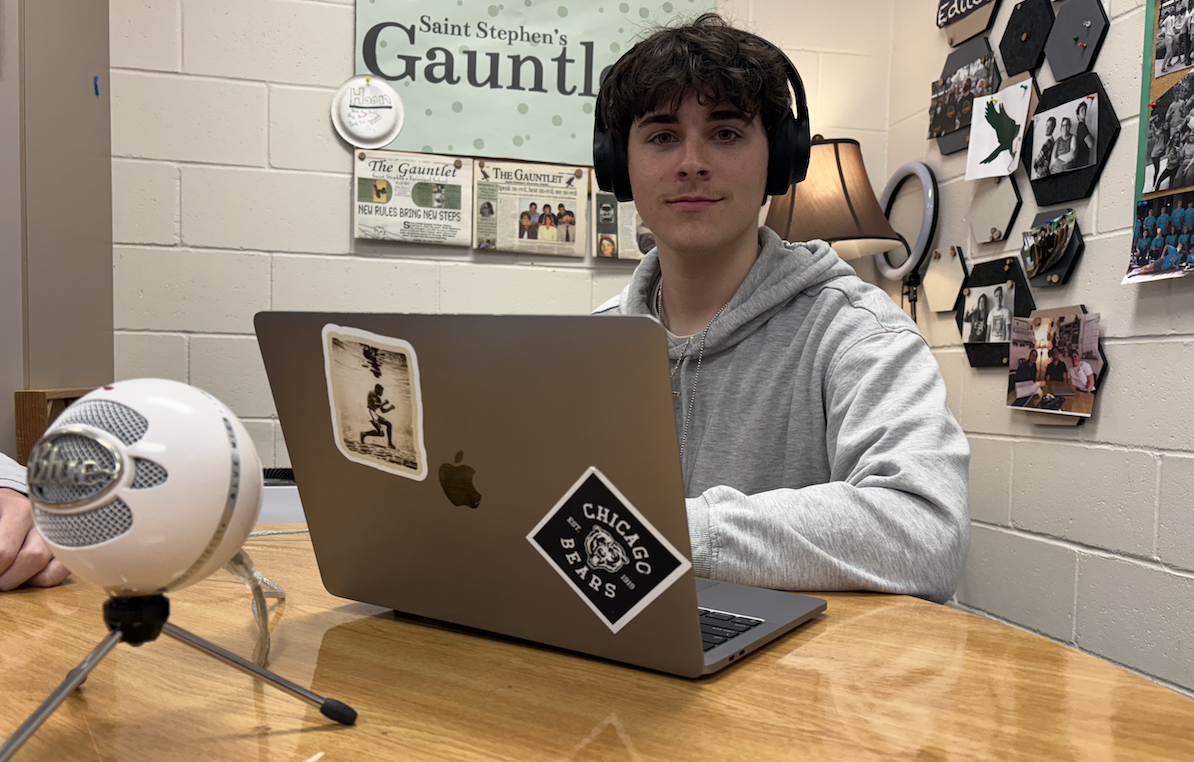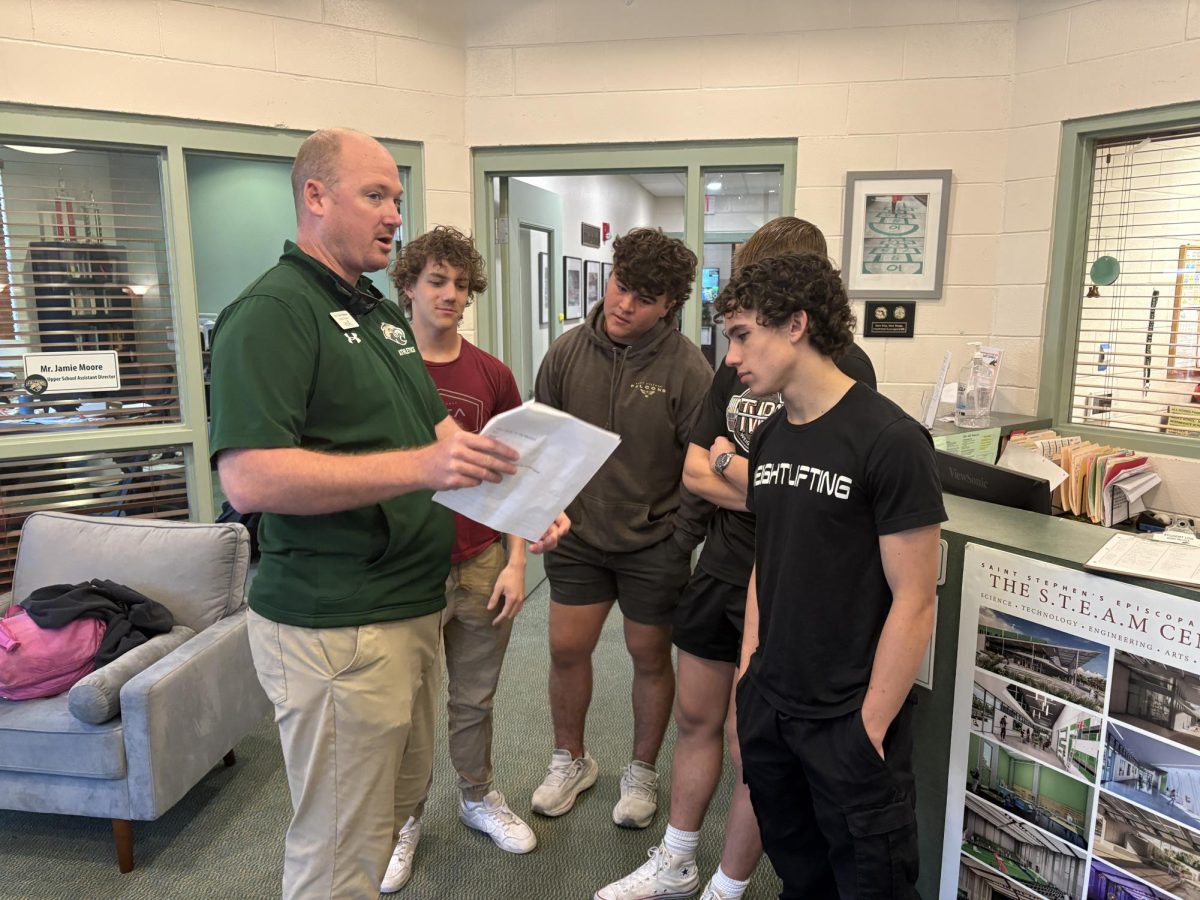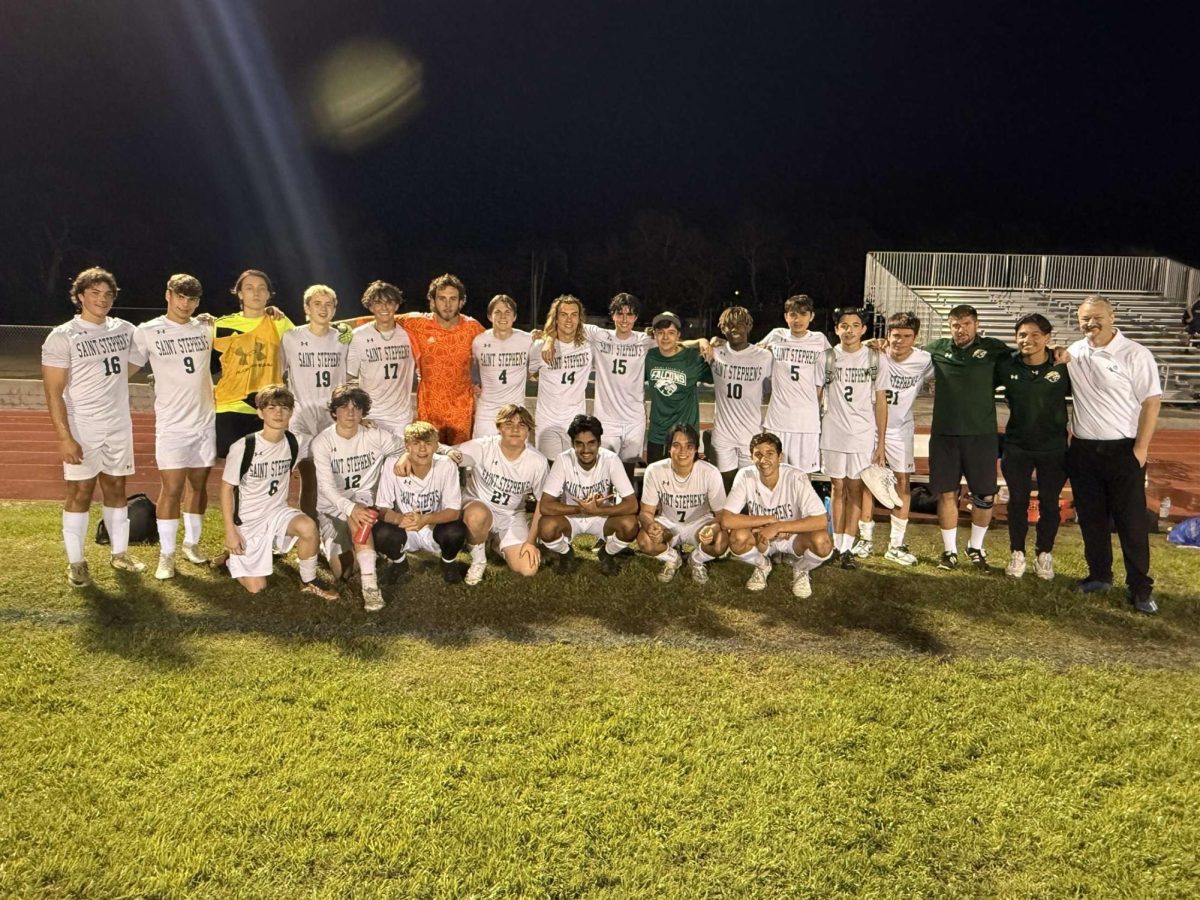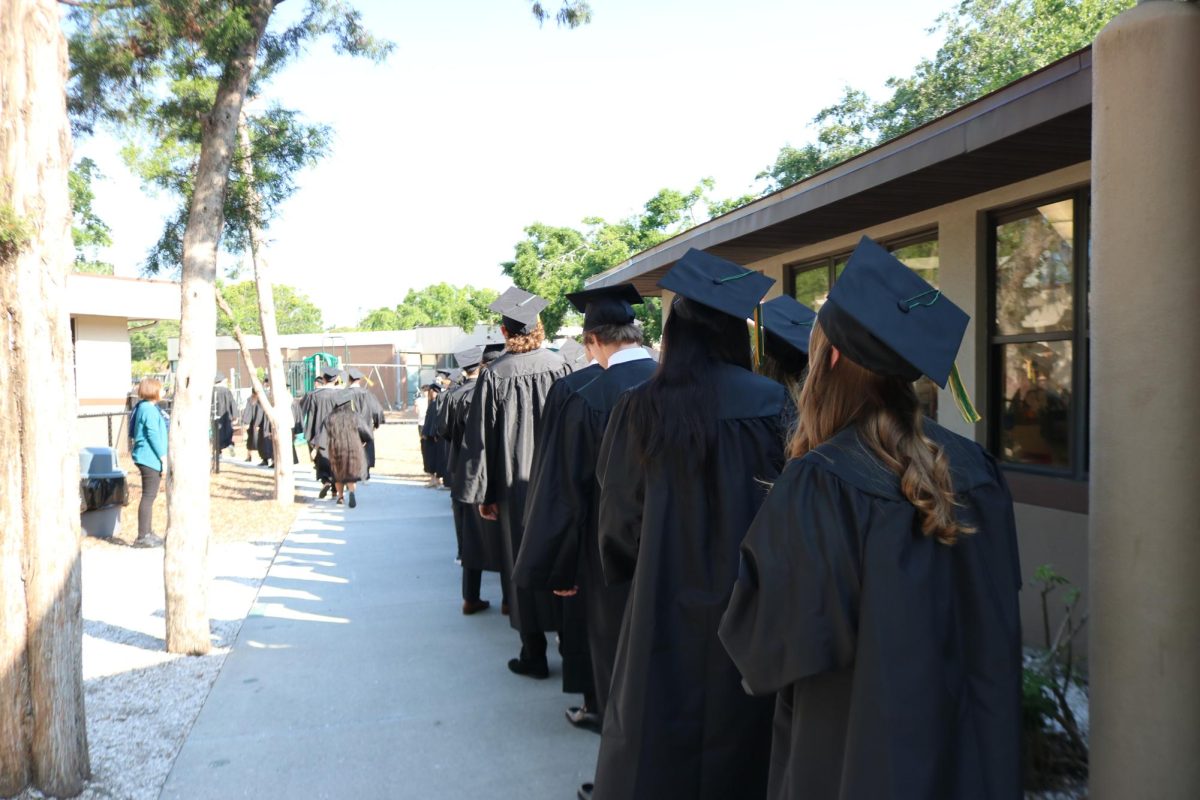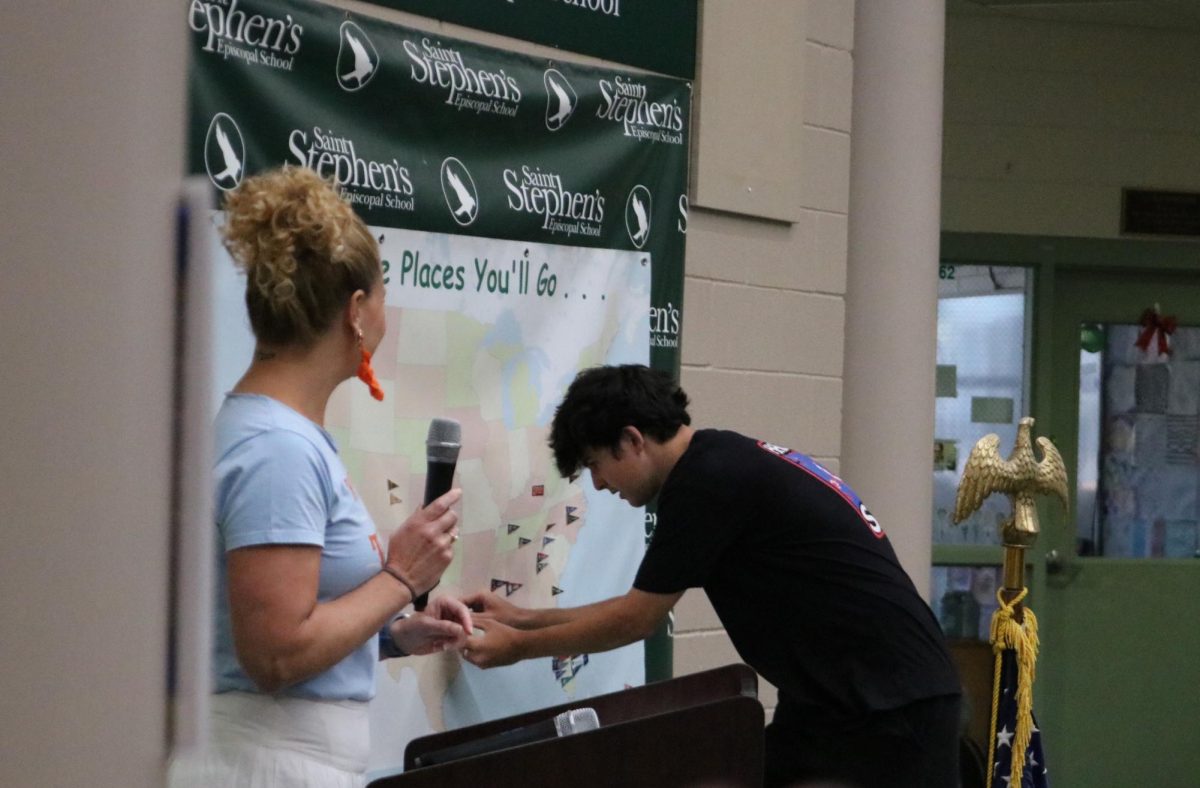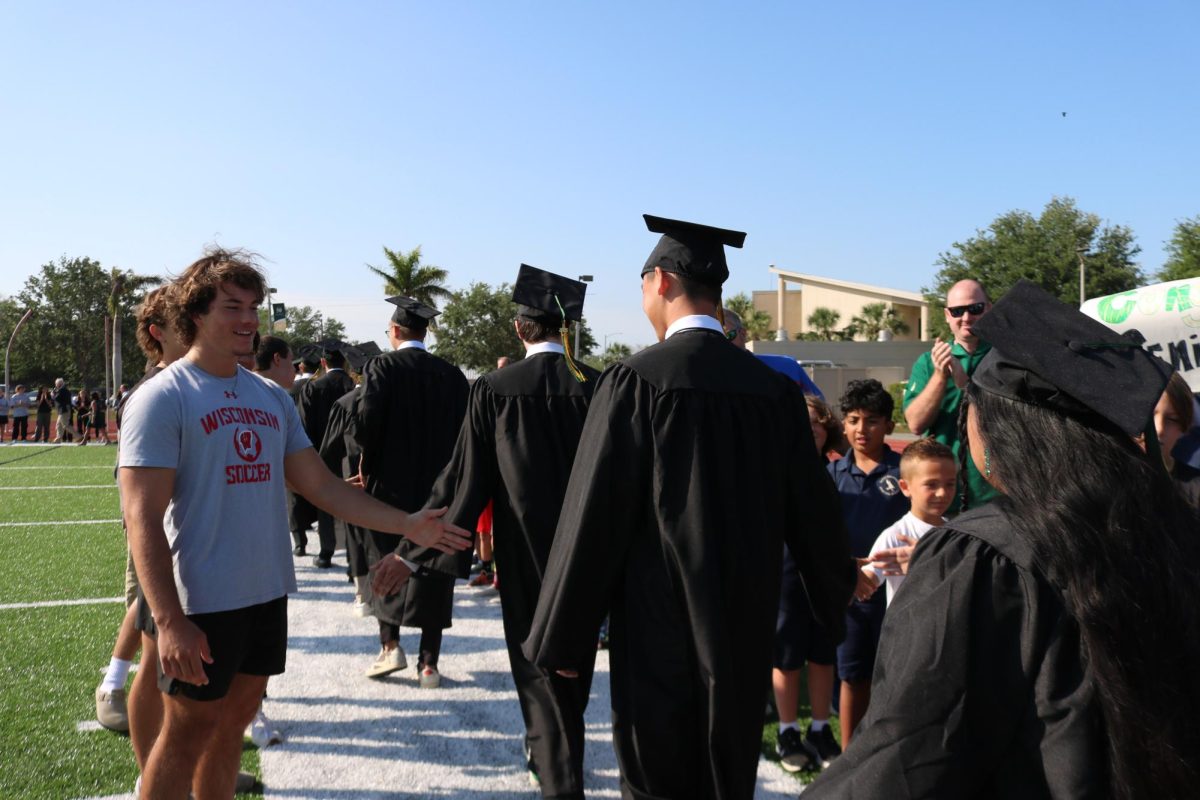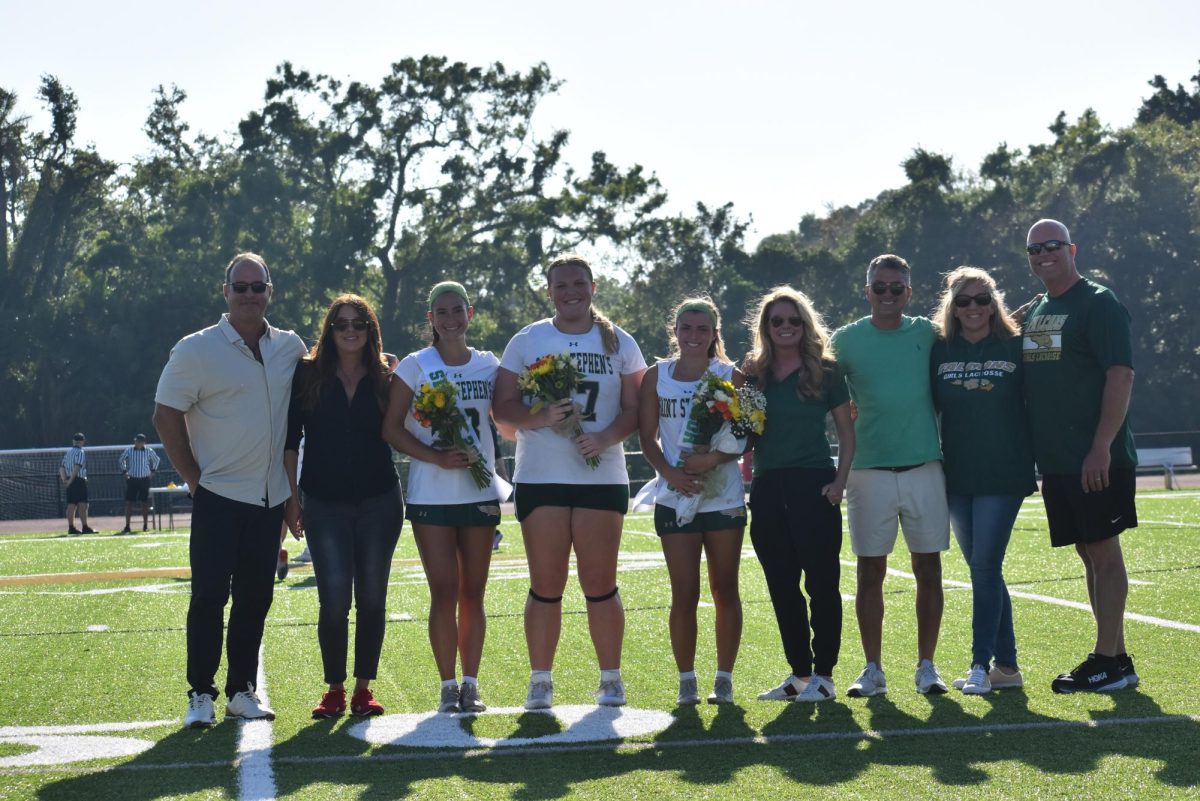Teachers share what remote learning has been like for them
English teacher Mr. Johnson and Spanish teacher Mrs. Gustavus explain what the transition to remote learning has been like for a teacher.
While students may be having difficulty adjusting to a virtual learning environment, teachers are seeking ways to adjust as well. The Gauntlet asked two Upper School teachers to share their thoughts on the virtual learning experience.
_____
*The following reflection is from Mr. David Johnson, an English teacher at Saint Stephen’s. He moved from the Middle School to the Upper School this year and teaches many English classes including AP English Language*
Our family does road trips. Along the way, there’s a lot of laughing with, yelling at, getting lost, finding cool places, and long awkward silences. This seems like an apt analogy for my transition to teaching online.
First, it’s a family thing. Our 11th-grade son occupies the living room for 12 hours doing physics, statistics, and other things I know nothing about. The 6th grader is finished with schoolwork by 9:00 am and spends the rest of the day continuously bouncing on a yoga ball while playing Fortnite. Emily, my wife, works with middle school kids. On Zoom. (It’s as productive as it sounds.) And me? I’ve been relegated to the back porch.
Despite the fact that it reaches 93 degrees by noon and every time my neighbor has her lawn mowed it sounds like a helicopter landing, it has worked surprisingly well.
The adaptability of the students has been impressive. In just days they mastered the art of Zoom backgrounds that seem to be hybrids of Shrek memes, Tik-Tok videos, and air-brushed posters. In the process, I’ve gotten to know each of my students in a whole new way. Instead of recognizing their familiar faces, I now know each one by his or her forehead and ceiling fan.
Most days, this is great. The learning is robust, the conversations are deep, and the curiosity sincere. But sometimes it’s not. There are times when the virtual is a poor facsimile for the real. It’s hard to “read the room” and pay attention to the body language of a student who is frustrated or confused. Questions sometimes hang in the interwebs, and there’s no way to give an encouraging nod to someone who I know is wanting to speak. I miss the spaces “in-between” where stories are shared, jokes are told, and relationships are formed. Physical proximity matters (pun intended).
When days are difficult, I get a bit theological and wonder if we’re trying to put new wine into old wineskins.
But then, I simply switch metaphors. (If students can do it mid-sentence, certainly I’m allowed a mid-thought revision, yes?) This trip is still very much in front of us. The getting lost, finding new places, and discovering all kinds of wonderful possibilities have just begun. It’s a worthy adventure. Even if I never leave the back porch.”
_____
*The following reflection is from Mrs. Maggie Gustavus is a Spanish teacher in the Upper School. She has taught at Saint Stephen’s for two years and teaches many levels of Spanish ranging from Spanish 3 to AP Spanish.*
How do you teach a foreign language without daily face-to-face contact with your students? How can you assess speaking, writing, listening and reading skills? How can I meet the needs of my many different levels of students and push them to grow in their Spanish while working under our current constraints? Those are all questions I pondered when we first decided to shift to an online learning environment at Saint Stephen’s.
Fortunately, we teachers found support everywhere. Dr. Pullen, Mr. Forrester, and Mrs. Conn have all been very encouraging to our efforts. Ms. Addison and the tech staff are always ready to help with our Zoom issues and Mr. Holt is fabulous helping us with attendance. Outside of school, I belong to several world language teacher communities and we have all been eagerly sharing with each other resources that we have created and strategies that have worked with our students during this time period. I have never felt I was alone trying to figure out what to do.
I am also very fortunate in that prior to Saint Stephen’s, I worked for 10 years in a wealthy public school district which invested heavily in technology for online instruction. Students were 1:1 on devices and we taught using a blended learning format, where some of the instruction was delivered online and the rest face-to-face. With snow days or other inclement weather, we went fully into on-line learning mode in a very similar fashion to what we are doing now, with established teacher and student accountability. It was great practice for today.
So much of what we do in the Spanish classroom is talk, assess, rethink, and approach a different way to help the students understand. I find myself carefully studying everything submitted, looking for clues as to what is unclear. In many ways, it is much easier with my two senior-level classes, AP Spanish Language and Spanish Culture and Conversation. In both of those classes, most students are at an Intermediate High or Advanced Low level (or higher) of language proficiency so we can read and discuss, view videos and listen to podcasts and write about what we viewed, and have discussions of art museums we have virtually visited or muralists we are studying.
Zoom Conferencing has been an excellent resource. By having regular Zoom sessions, we can still connect with each other and share what we are going through. I am sure loneliness is a major factor among our students as we isolate and I hope they look forward to seeing their classmates in the Zoom setting.
In the end, it’s all about connecting and communicating with each other. After this experience, we will all value our “normal” even more and realize that we are truly blessed in the lives we are living.”
_____
A huge thank you to Mr. Johnson and Mrs. Gustavus for their contributions. Readers are always welcome to share their thoughts on issues at Saint Stephen’s in a letter to the editor. Information on submissions can be found here.


